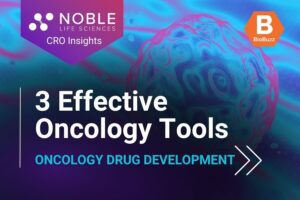
The Imperative of Cybersecurity in the Life Sciences Sector
May 30, 2024
| BioBuzz has been connecting the life science workforce since 2009. We’ve built an expansive community in the Mid-Atlantic with a national readership that spans from Massachusettes to Florida, and New York to California. For our next chapter, we’re building a proprietary talent logistics model to help employers source and hire life science talent. Learn more. |
Social media, banking apps, fitness trackers—these are all integral parts of our daily lives, each holding our personal data. With everything now digitized and stored in the cloud, accessible both locally and remotely, our exposure to cyber threats has never been greater. As we advance further into the digital age, the risks associated with data breaches and cyberattacks grow exponentially. One crucial but often overlooked area of concern is the life sciences industry.
The increasing reliance on digital systems for research, development, and clinical trials makes the life sciences industry a prime target for cybercriminals. The potential impact of cybersecurity breaches in this field can be catastrophic, affecting not only financial stability but also patient safety and public health.
The life sciences sector faces a myriad of cybersecurity threats, including ransomware attacks, business email compromise, and the exploitation of emerging technologies like AI and quantum computing by organized crime groups. Ransomware attacks can halt critical research, compromise sensitive patient data, and disrupt supply chains, leading to significant financial losses and reputational damage. Business email compromise, on the other hand, can lead to unauthorized access to proprietary information and intellectual property, which are the lifeblood of pharmaceutical and biotech companies.
At the most recent Ecphora Capital Seminar, Chris May, MS, CISSP, Director of Security at Advantage Technology, highlighted the unique cyber threats that directly impact the life sciences sector. His presentation focused on strategic approaches to bolster organizational cyber resilience in the face of these challenges.
The Need for Comprehensive Cybersecurity Strategies
According to May, a comprehensive detection and response strategy is crucial to combatting these evolving threats. This involves real-time monitoring of systems, advanced threat detection technologies, and rapid incident response protocols. However, technology alone is not enough. Employee training is crucial, as human error is often the weakest link in cybersecurity defenses. Regular security awareness training can equip employees with the knowledge to recognize and respond to potential threats, such as phishing emails and suspicious activities.
Implementing two-factor authentication (2FA) is another critical step. By requiring a second form of verification, 2FA adds an extra layer of security that can prevent unauthorized access even if passwords are compromised. For life sciences companies, this is particularly important given the sensitive nature of the data they handle.
Here are some of the top insights from May’s talk:
- Strong Passwords: Ensure your passwords are at least 12 characters long and include a mix of letters, numbers, and symbols.
- Two-Factor Authentication: Always use two-factor authentication, as biometrics alone aren’t secure enough.
- Up-to-Date Backups: Keep an up-to-date backup of your data. This ensures data recovery without paying ransoms if you get hacked.
- Software Updates: Regularly update your software to fix vulnerabilities.
- Self-Reliance: Don’t expect the government to bail you out if you get hacked, similar to how they wouldn’t if your house was robbed.
- NIST Recommendations: Review the NIST cybersecurity recommendations for comprehensive guidelines.
- Human Error: 80% of system breaches are due to human error, such as clicking on links and falling for phishing scams.
- Vulnerability Awareness: Recognize that no one expects to get hacked, yet it happens every day.
The life sciences sector also has unique challenges that necessitate tailored cybersecurity solutions. For instance, the regulatory environment demands stringent data protection and privacy measures. Companies must comply with regulations such as HIPAA and GDPR, which mandate robust cybersecurity practices to safeguard patient data. Additionally, the sector’s collaborative nature, involving partnerships with external researchers and organizations, requires secure communication and data sharing protocols.
Solutions
To build a robust cybersecurity framework, life sciences companies should start with a comprehensive information security program. This includes developing policies and procedures, conducting risk assessments, and implementing security controls. Regular vulnerability assessments are essential to identify and address any weaknesses in the system. Engaging a security consultant can provide expert guidance in developing and maintaining effective cybersecurity practices.
Reviewing cyber insurance coverage is another important step. Cyber insurance can provide financial protection in the event of a breach, covering costs related to data recovery, business interruption, and legal liabilities. Additionally, assessing vendor security practices is crucial, as third-party vendors can be a potential entry point for cyberattacks.
As the life sciences sector continues to evolve, so too must its approach to cybersecurity. By implementing comprehensive strategies, investing in employee training, and ensuring compliance with regulatory standards, life sciences companies can protect their valuable data and maintain the trust of patients and partners. The stakes are high, but with proactive measures, the life sciences industry can mitigate the risks and continue to innovate safely and securely.






